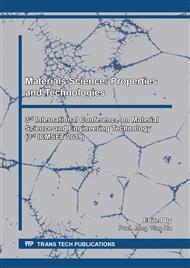p.1
p.5
p.9
p.15
p.21
p.27
p.33
p.39
Composite Plugging Removal Technology and Application in Low Permeability Oilfield
Abstract:
In an oilfield factory, the blocking and jam in Chang 2 reservoir is very serious. In recentyears, according to analysizing different plugging mechanism and optimizing acidizing formula, theoptimal plugging removal technology was formed suitable for the solution for the Chang 2 reservoirof oilfield factory. This plugging removal formula increases the efficiency radius, and increases thedosage of additives to protect the pipe, rod and pump from the precipitation such as Ca2+and Mg2+,which causes new pollution. Reasonable multiple technologies were designed, and low displacementmethod was used in the injection process, aiming at the characteristics of Chang 2 reservoir. Thismethod extends the time of plugging removal fluid staying around the well bore, which can eliminateplugging near well bore area effectively, and improve the permeability. DQ-1 composite pluggingremoval and other kinds of plugging removal methods have been used more than 50 times, and theeffect is remarkable, which made a positive contribution to stable production of the oilfield.
Info:
Periodical:
Pages:
9-13
Citation:
Online since:
August 2019
Authors:
Price:
Сopyright:
© 2019 Trans Tech Publications Ltd. All Rights Reserved
Share:
Citation:


